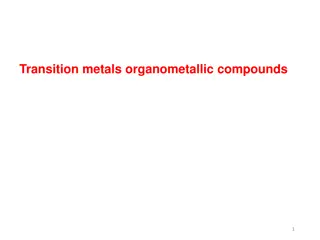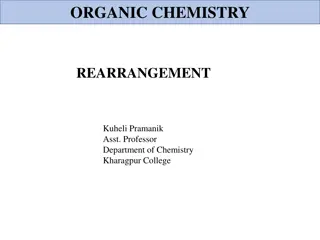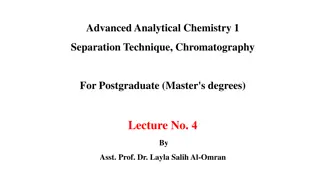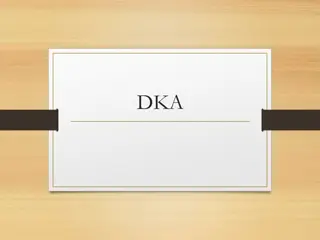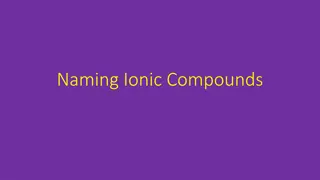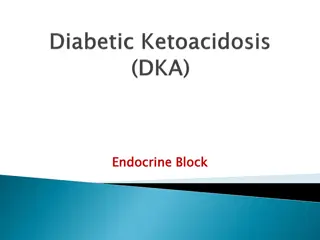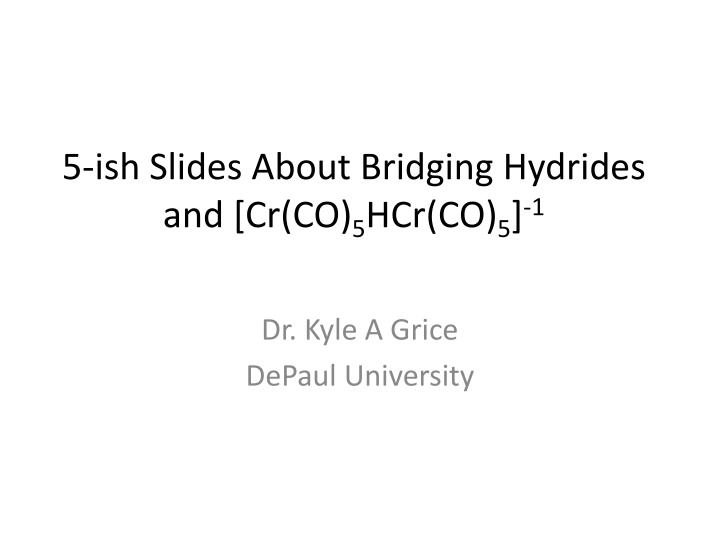
Bridging Hydrides in [Cr(CO)5HCr(CO)5]-1
Explore the interactions and synthesis of bridging hydrides in [Cr(CO)5HCr(CO)5]-1 through MO theory, electron counting, DFT calculations, and frontier orbital analysis. Discover the stability provided by these 3-center-2-electron interactions and avenues for further DFT exploration.
Download Presentation

Please find below an Image/Link to download the presentation.
The content on the website is provided AS IS for your information and personal use only. It may not be sold, licensed, or shared on other websites without obtaining consent from the author. If you encounter any issues during the download, it is possible that the publisher has removed the file from their server.
You are allowed to download the files provided on this website for personal or commercial use, subject to the condition that they are used lawfully. All files are the property of their respective owners.
The content on the website is provided AS IS for your information and personal use only. It may not be sold, licensed, or shared on other websites without obtaining consent from the author.
E N D
Presentation Transcript
5-ish Slides About Bridging Hydrides and [Cr(CO)5HCr(CO)5]-1 Dr. Kyle A Grice DePaul University
Bridging Hydrides M-H-M interactions are 3-center-2 electron interactions. Formally, you can think of it as sharing 1 electron to each metal. (In the ionic counting method, hydride is a 2e-donor) Commonly seen in B2H6(diborane) The bridging interaction stabilizes reactive fragments by donating some electron density from the hydride to a metal that really wants another ligand. Fundamentally, MO theory is the best way to see why the bridging interaction is stabilizing.
[Cr(CO)5HCr(CO)5]-1 Synthesis and Literature SciFinder gives dozens of references involving this species. It has been studied for many decades. From JACS 1966, 88, 367-368: NMR shows hydride at -19.5 ppm X-ray Crystal structure shows D4hgeometry (hydride wasn t observed)
Electron Counting for [Cr(CO)5HCr(CO)5]-1 Cr(0), d6, 18e- complex Air-stable Commercially available Cr(0), d6, 18e- complex Can be formed from Cr(CO)52- and proton source Cr(0), d6, 16e-fragment Not isolable, Very reactive Can be thought of as a combination of the two fragments above Bridging hydride stabilizes reactive 16e- fragment Average of Cr(-1), d7, 17e- per Cr.
DFT Calcs of [Cr(CO)5HCr(CO)5]-1 Moderate-level calculation: Gas phase, B3LYP/6-31G(d) for C, O, H and LANL2DZ for Cr. Optimization and frequency calculation to verify that its at the bottom of a well in a potential energy surface. Appears to be D4d symmetry, later I could try to calc D4h geometry too.
Frontier Orbitals Highest Occupied Molecular Orbital (HOMO) is two degenerate orbitals related to M-C bonding (back-bonding to C-O antibonding orbitals) A pair of orbitals below that are similar. None show Cr-H interactions The HOMO-6 (the 6th orbital below the HOMO) involves the hydride. It looks like dz2 from each metal overlapping with the H 1s orbital
Possibilities for further DFT exploration Try solvation and different DFT functionals and basis sets Look at D4h symmetry and rotation around M-H-M axis Look at intermediates for synthesis and get reaction energies Examine Mo and W analogues Some more advanced DFT work has been done if you are curious to read more: JACS, 2005, 127, 16494-16504, Inorg. Chim. Acta 2005, 358, 1442-1452, and J. Phys. Chem. A2001, 105, 11134.


